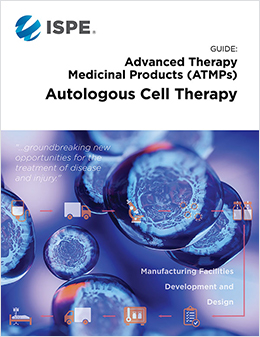Guide: ATMPs - Autologous Cell Therapy

Published: November 2021
Pages: 148
Advanced Therapy Medicinal Product (ATMP) therapies include cells, engineered tissues, or the manipulation of the patient’s genome. This is in contrast with traditional manufacturing processes for compounds that are synthetically derived (i.e., small molecule) or proteins or peptides expressed by cellular systems (i.e., large molecule biopharmaceuticals). ATMPs are based on genes, cells, or tissues delivered to patients to provide a therapeutic benefit based on a specific target of interest.
There are two general primary focus areas for ATMPs:
- Cell therapy products are manipulated whole living cells, sometimes using gene therapy methods that are introduced into the patient and act at the cellular level to treat disease or injury. There are two categories of cell therapy products:
- Autologous: Cells are derived from a patient and returned to the same patient after in vitro manipulation.
- Allogeneic: Samples are derived from donors and the final cell therapy can be used to treat many different patients.
- Gene therapy refers to a rapidly growing field of medicine in which genes are introduced into the body to treat or prevent diseases. Gene therapy active substance contains recombinant nucleic acid that will regulate, repair, replace, add, or delete a genetic sequence in the patient. Although a variety of methods can be used to deliver the genetic materials into the target cells and tissues, modified viral vectors represent one of the more common delivery routes because of their transduction efficiency for therapeutic genes
This Guide acknowledges that the term ATMP is quite broad and that these are emerging therapies utilizing rapidly evolving technology and equipment. In recognition of this, this Guide focuses on autologous cell therapies while providing content that may be applicable to other types of ATMPs.
This Guide focuses primarily on manufacturing facility development and design for autologous cell therapies for parenteral use. This Guide provides an overview of the critical aspects of ATMP facility design as well as the key relationship between current process/facility attribute alignment and how that changes in the ATMP space.
Guide Core Team
For the full list of contributors to this Guide see Guidance Document Teams









